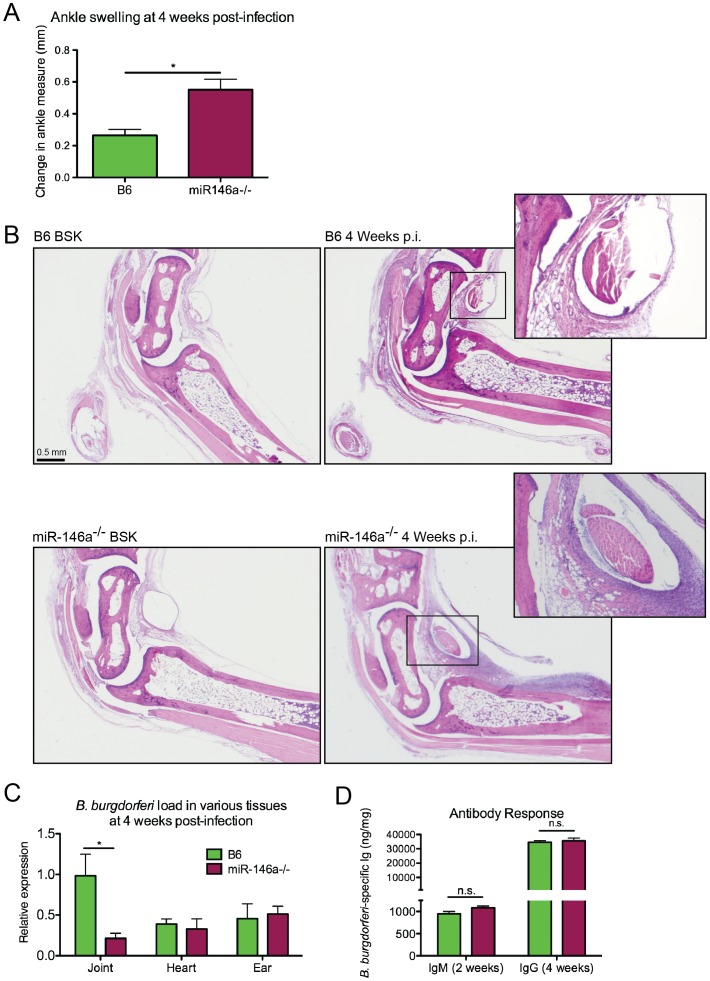Figure 2. B6 miR-146a−/− mice develop more severe arthritis at 4 weeks post-infection independent of bacterial burden.
Arthritis severity was determined for B. burgdorferi-infected B6 or B6 miR-146a−/− mice at 4 weeks post-infection. (A) Blinded measurements of rear ankles of mice were taken before infection and at 4 weeks post-infection, and change in ankle measurement is shown. (B) Representative images of H&E-stained tibiotarsal joints from BSK-injected (control) and 4 week-infected B6 and B6 miR-146a−/− mice used for histopathology scoring (see Table 2). Cranial tibial tendons of infected joints are enlarged to show detail of tendon sheath thickening and PMN infiltrate. (C) Bacterial burden was determined by quantifying B. burgdorferi-specific 16S rRNA normalized to 1000 β-actin for joint and heart tissue, and recA, normalized to 1000 nidogen for ear tissue. Pooled from two independent infection experiments (n≥9 mice per experiment) for joints, and from one experiment for heart and ear tissue (n = 5 mice). Statistical significance was determined by Student t test (*p<0.01). (D) Antibody concentrations were estimated in serum collected from B. burgdorferi-infected B6 and B6 miR-146a−/− mice as described in materials and methods. IgM was measured at 2 weeks post-infection (n = 4) and IgG was measured at 4 weeks post-infection (n = 9–10). Data are representative of 2 independent experiments (n.s.: no significant difference between strains).

